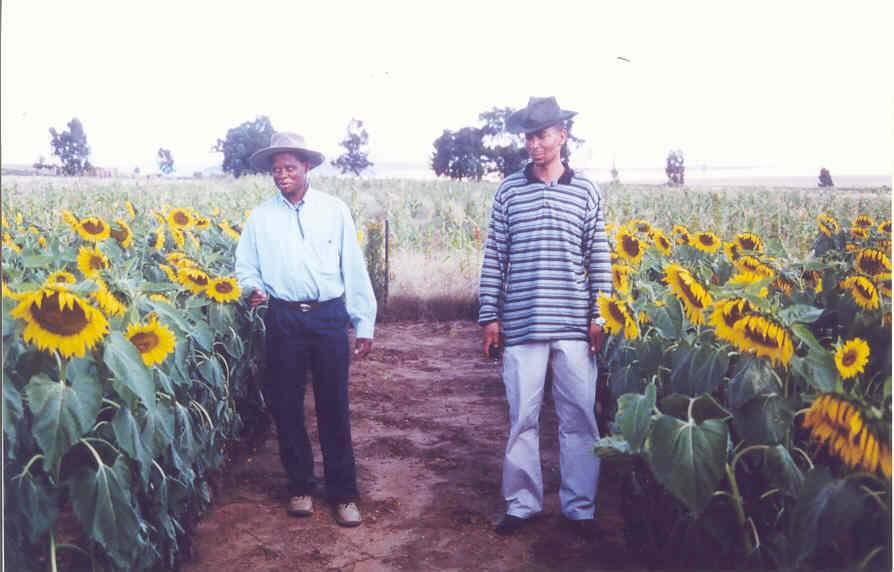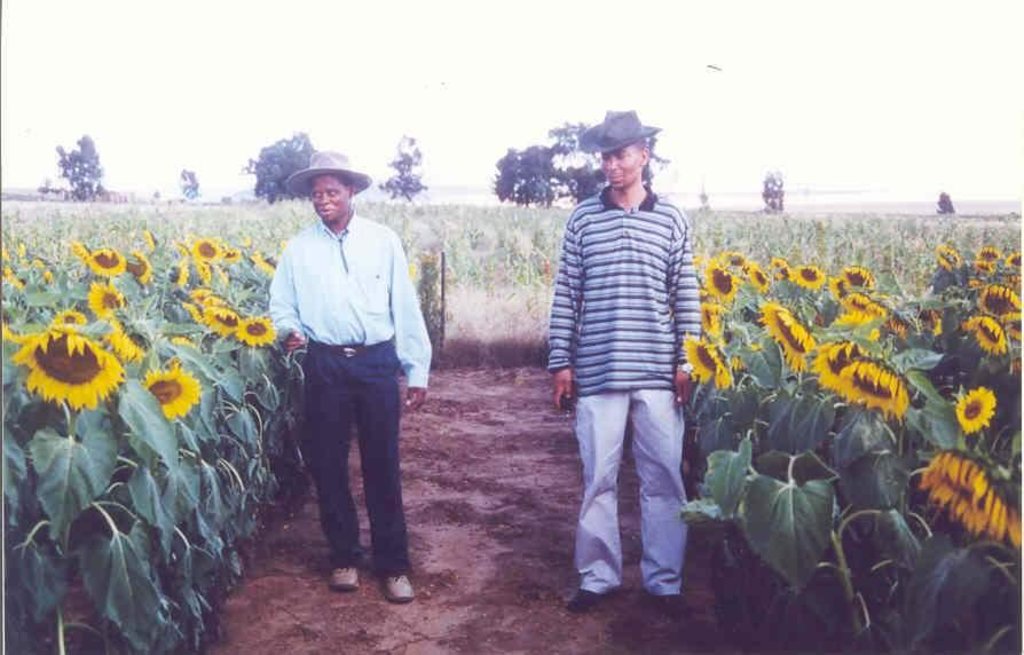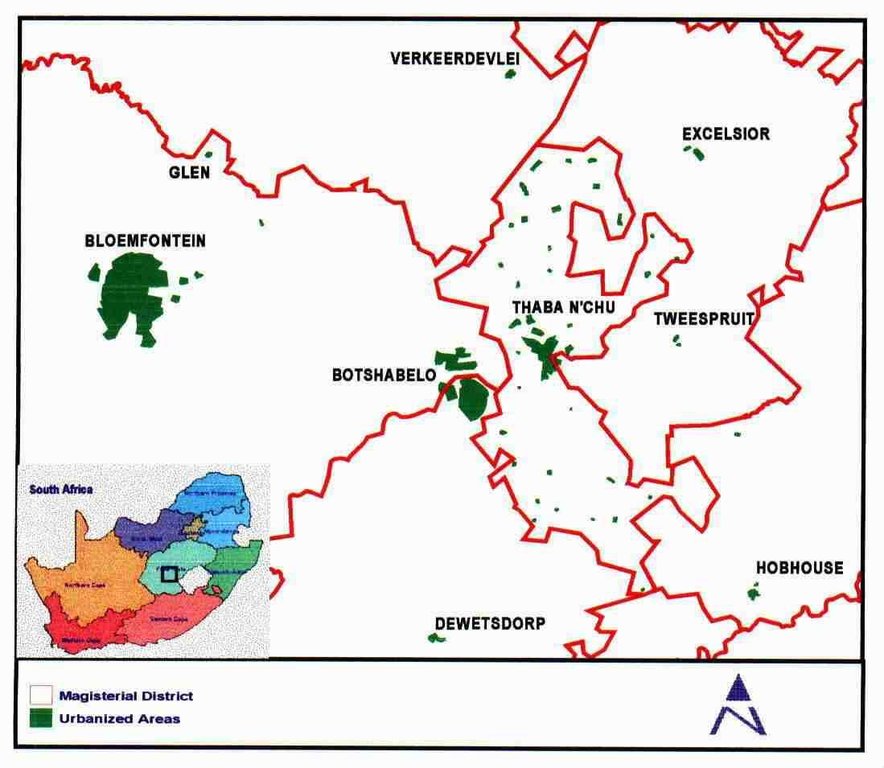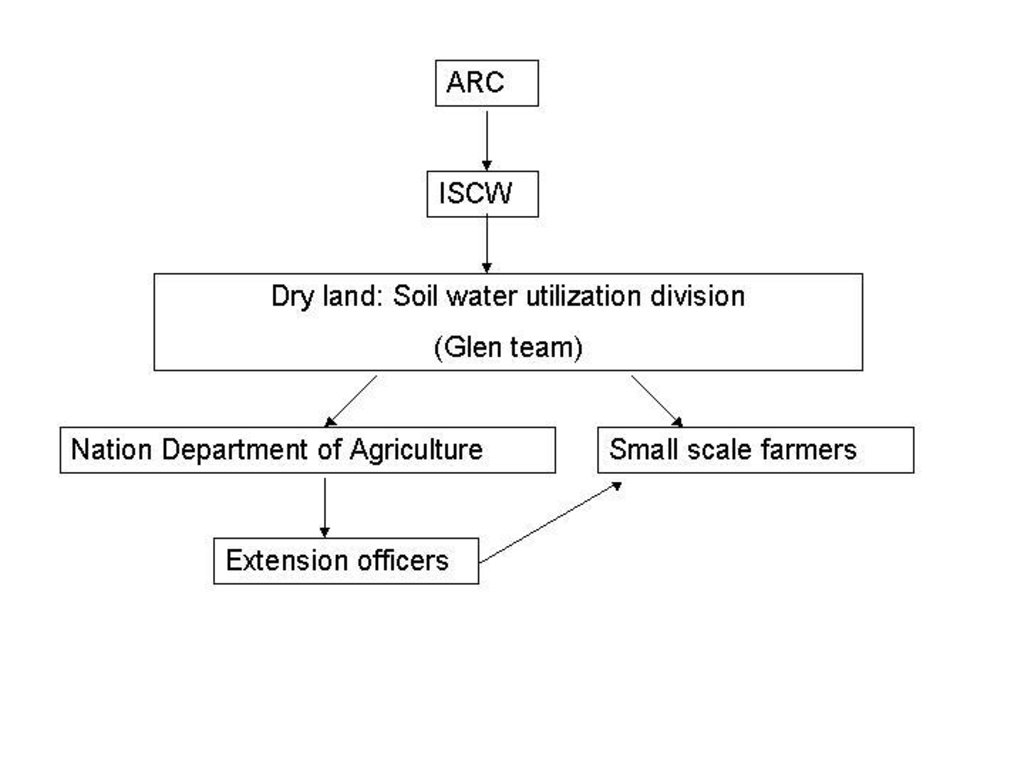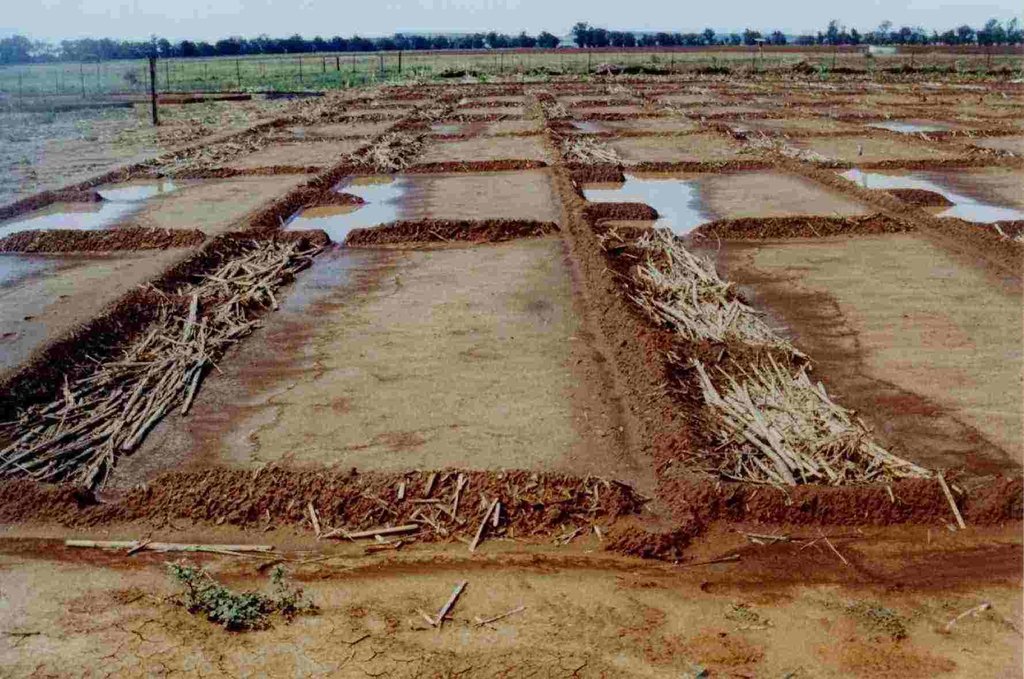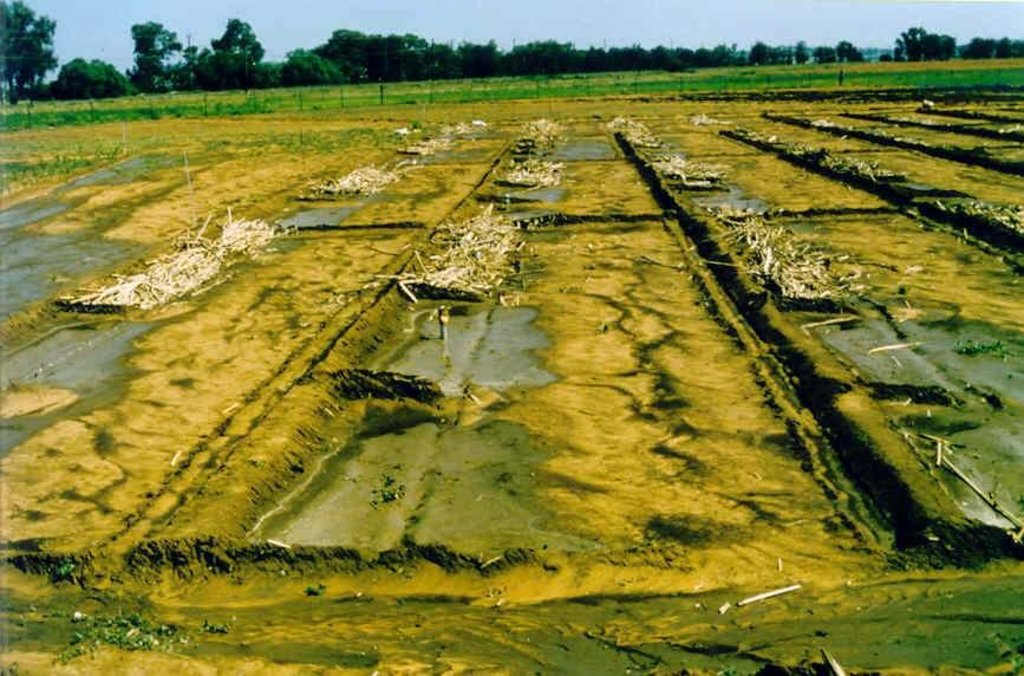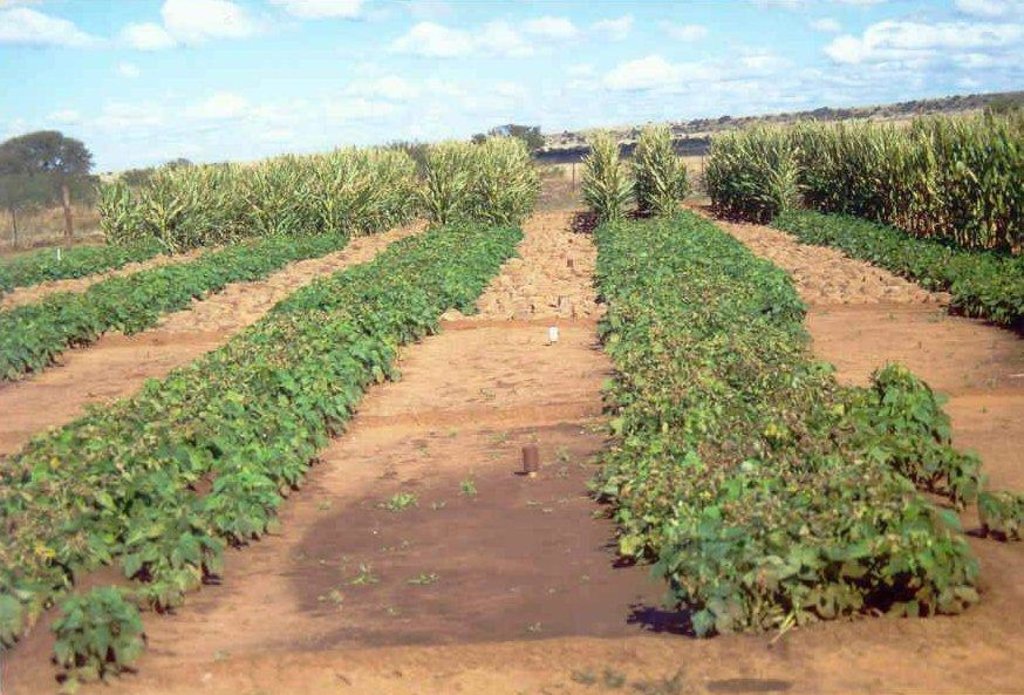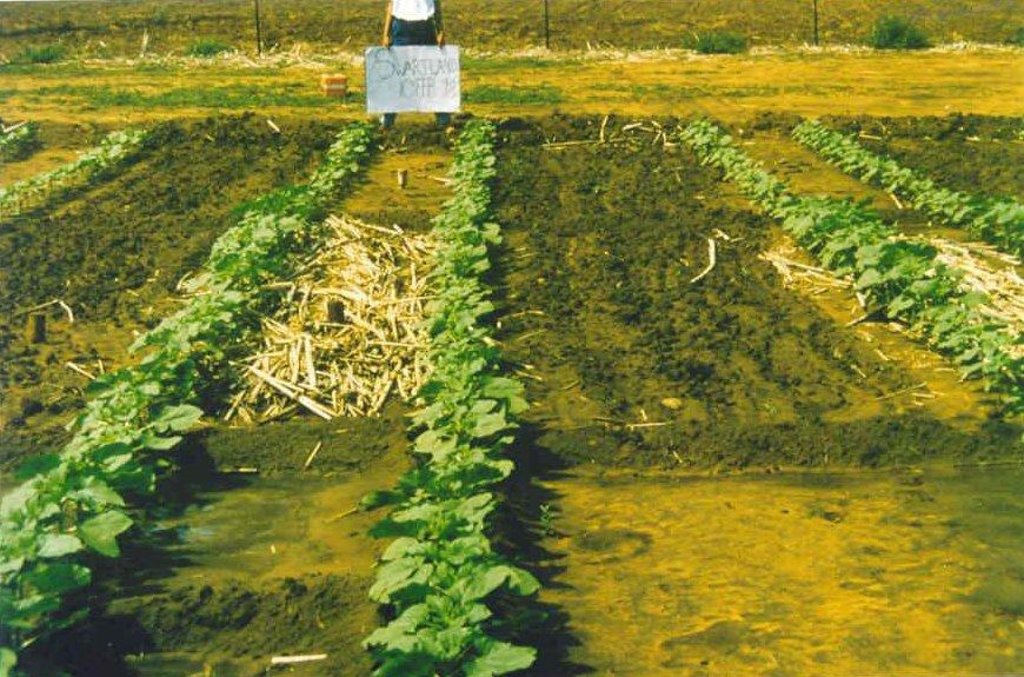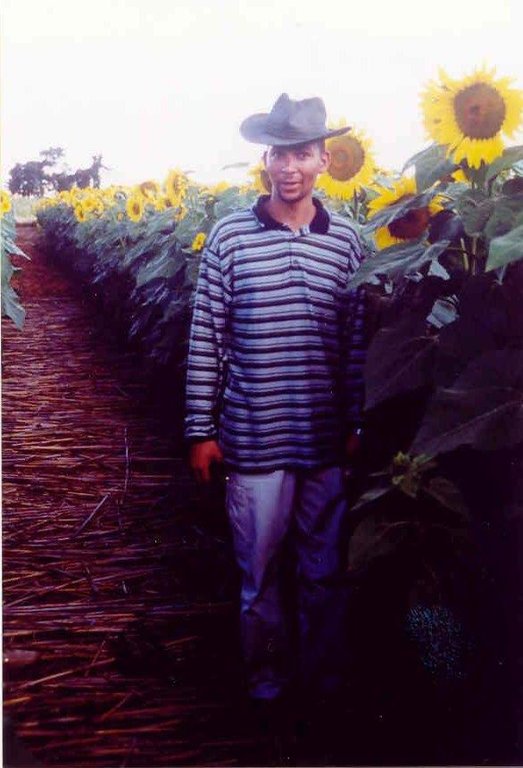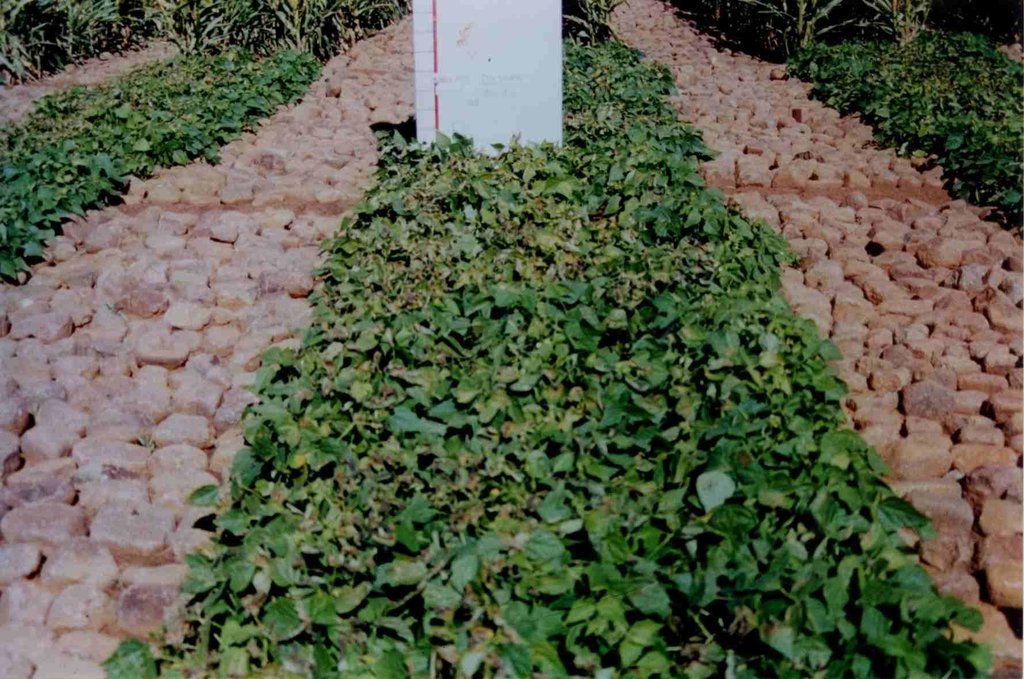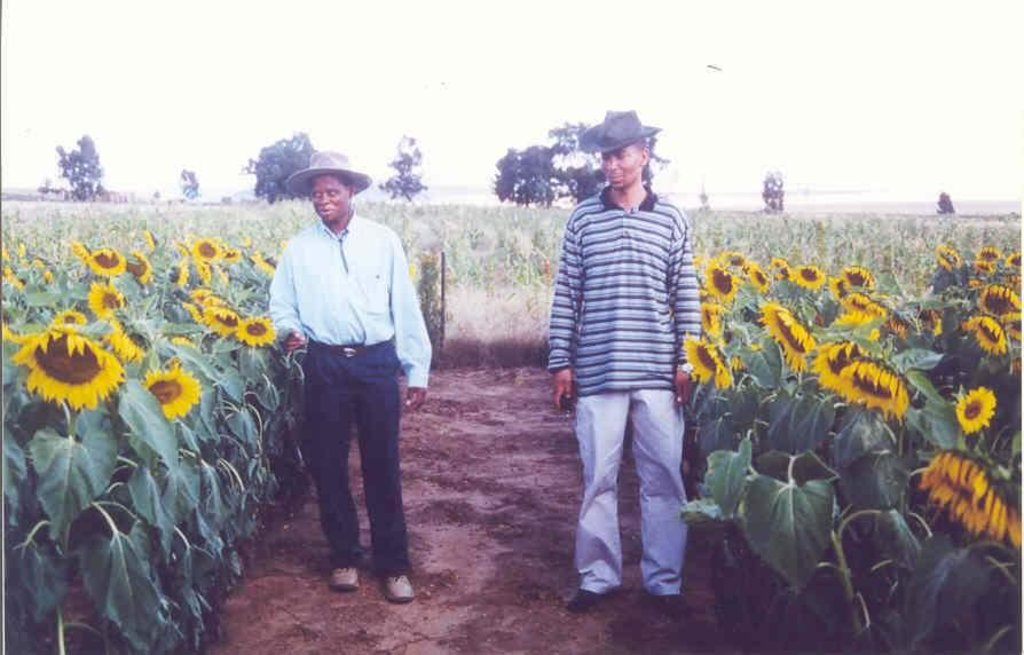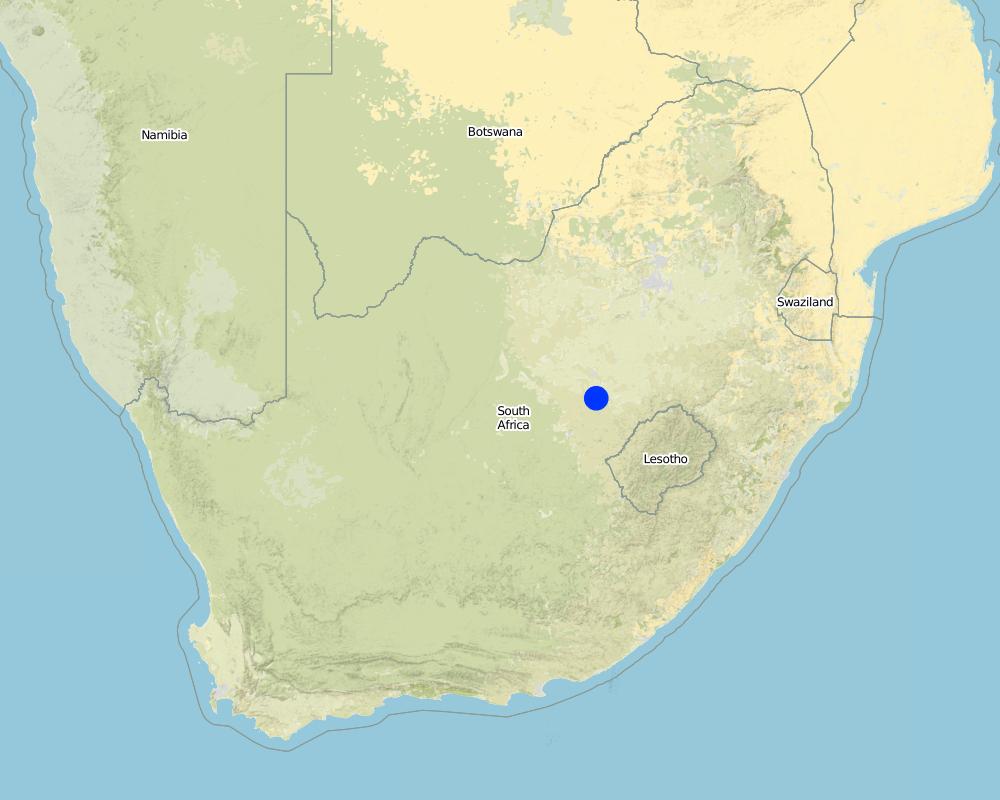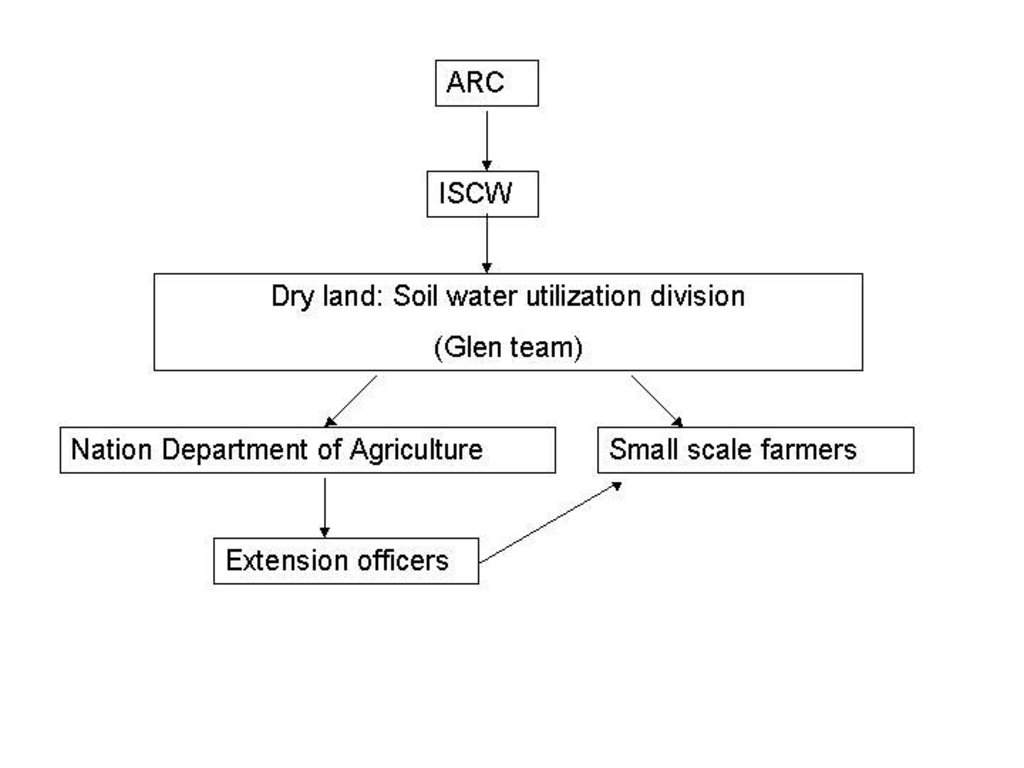Water Harvesting & Basin tillage (WHB) through demonstrations [Sudáfrica]
- Creación:
- Actualización:
- Compilador: Cobus Botha
- Editor: –
- Revisor: Fabian Ottiger
approaches_2336 - Sudáfrica
Visualizar secciones
Expandir todo Colapsar todos1. Información general
1.2 Detalles de contacto de las personas de referencia e instituciones involucradas en la evaluación y la documentación del Enfoque
1.3 Condiciones referidas al uso de datos documentados mediante WOCAT
El compilador y la/s persona(s) de referencia claves aceptan las condiciones acerca del uso de los datos documentados mediante WOCAT :
Sí
1.4 Referencia/s al/los Cuestionario(s) de Tecnologías MST
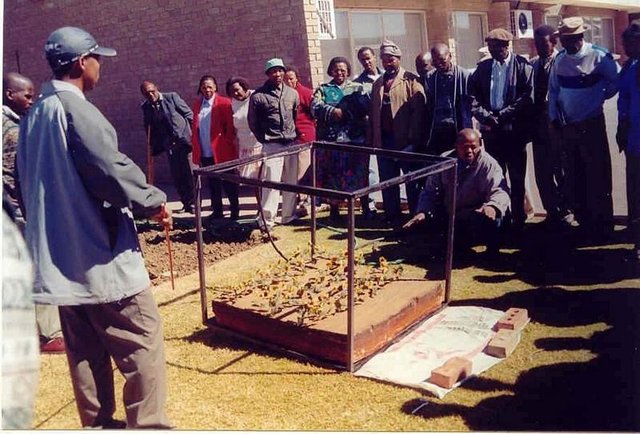
Water Harvesting & Basin tillage [Sudáfrica]
In-field water harvesting technique
- Compilador: Cobus Botha
2. Descripción del Enfoque MST
2.1 Breve descripción del Enfoque
Optimising rainwater use, reduce runoff by use of basins and reduce evaporation losses by applying a mulch (stone/reeds) on the runoff strip and in the basins.
2.2 Descripción detallada del Enfoque MST
Descripción detallada del Enfoque MST:
Aims / objectives: Given the marginal soils of a clayey nature and/or slope terrain, coupled with erratic rainfall events, the technology aims to harvest available rain water and prevent runoff and soil loss. At present, PRAs are conducted in target areas and so far, people are eager to adopt the technology. The aim is to train them and assist in constructing the basins so that after a year they will be able to take over the project entirely even though the team will still be around to provide advice should the need arise.
2.3 Fotos del Enfoque
2.5 País/ región/ lugares donde el Enfoque fue aplicado
País:
Sudáfrica
Región/ Estado/ Provincia:
Free State
Map
×2.6 Fechas de inicio y conclusión del Enfoque
Indique año del inicio:
1996
Año de conclusión (si el Enfoque ya no se aplica):
2002
2.7 Tipo de Enfoque
- proyecto/ basado en un programa
2.8 Propósitos/ objetivos principales del Enfoque
The Approach focused on SLM only (n/a)
*To make optimal use of pre-plant water that collects in basins from summer rains that fall during the fallow period. Saved water very beneficial during the reproductive growth of plants which often occurs when there is no rain.
*Prevention of soil and water loss through water erosion and runoff by the use of basins.
*Restriction of evaporation by the use of mulch. Straw is mostly preferred for its biodegradability although stone in comparative percentage cover is more effective.
The SLM Approach addressed the following problems: The target areas are marginal for crop production because of relatively low and erratic rainfall and dominantly clay soils on which the precipitation use efficiency is low because of high losses due to runoff and evaporation form the soul surface.
2.9 Condiciones que facilitan o impiden la implementación de la/s Tecnología/s aplicadas bajo el Enfoque
normas y valores sociales/ culturales/ religiosos
- impiden
People are resistant to change. Had to convince that they can get better yields with new technique.
Treatment through the SLM Approach: Interacting with people as much as possible and comparing yields on farmers days after harvest.
disponibilidad/ acceso a recursos y servicios financieros
- impiden
Most can't afford inputs and to hire labour for construction of basins.
Treatment through the SLM Approach: Team will ask for discounts from providers and encourage team work amongst community.
marco de trabajo legal (tenencia de tierra, derechos de uso de tierra y agua)
- facilitan
The existing land ownership, land use rights / water rights greatly helped the approach implementation: Land owners have little deeds and no law inhibits them from actively participating in the project.
3. Participación y roles de las partes interesadas involucradas
3.1 Partes interesadas involucradas en el Enfoque y sus roles
- usuarios locales de tierras/ comunidades locales
Land owners and local chiefs. Approach can only be implemented with their acceptance and approval. Specific ethnic groups: Black, resource poor farmers
Women tend to be submissive and docile. They look up to the men for decision making.
- especialistas MST/consejeros agrícolas
- gobierno nacional (planificadores, autoridades)
- organización internacional
ARC - ISCW
3.2 Involucramiento de los usuarios locales de tierras/ comunidades locales en las distintas fases del Enfoque
| Involucramiento de los usuarios locales de tierras/ comunidades locales | Especifique quién se involucró y describa las actividades | |
|---|---|---|
| iniciación/ motivación | ninguno | rapid/participatory rural appraisal |
| planificación | ninguno | |
| implementación | pasivo | casual labour |
| monitoreo y evaluación | interactivo | |
| Research | ninguno | on-farm; On-station experiments are conducted at Glen to evaluate different SWC techniques. The new technology is transferred by means of on-farm demonstration plots and information days. |
3.3 Flujograma (si estuviera disponible)
3.4 La toma de decisiones en la selección de Tecnología(s) MST
Especifique quién decidió la selección de las Tecnología/ Tecnologías a implementarse:
- solo por especialistas MST
Explique:
land user driven (bottom-up). Realisation of poverty.
Decisions on the method of implementing the SLM Technology were made by mainly by land users supported by SLM specialists. land user driven (bottom-up). The need of land users to alleviate poverty.
4. Apoyo técnico, fortalecimiento institucional y gestión del conocimiento
4.1 Construcción de capacidades / capacitación
¿Se proporcionó la capacitación a usuarios de tierras/ otras partes interesadas?
Sí
Especifique quién fue capacitado:
- usuarios de tierras
- extensionists/trainers
Forma de capacitación:
- áreas de demostración
- reuniones públicas
Temas avanzados:
Construction of basins; better understanding of the system in simple terms; the concept of infiltration, evapotranspiration; erosion and runoff.
4.2 Servicio de asesoría
¿Los usuarios de tierras tienen acceso a un servicio de asesoría?
Sí
Especifique si servicio proporcionado se realizó:
- en centros permanentes
Describa/ comentarios:
NDA Extension; Key elements: Assistance in technology transfer, Organising public meetings, Establishing & link between specialists and land users;
1) Advisory service was carried out through: government's existing extension system. Extension staff: mainly government employees
2) Target groups for extension: land users; Activities: Technology transfer
Advisory service is quite adequate to ensure the continuation of land conservation activities; With a little persuasion, they assist completely.
4.3 Fortalecimiento institucional (desarrollo institucional)
¿Se establecieron o fortalecieron instituciones mediante el Enfoque?
- sí, un poco
Especifique el nivel o los niveles en los que se fortalecieron o establecieron las instituciones:
- local
Especifique el tipo de apoyo:
- construcción de capacidades/ entrenamiento
4.4 Monitoreo y evaluación
¿El monitoreo y la evaluación forman parte del Enfoque?
Sí
Comentarios:
bio-physical aspects were regular monitored through measurements
socio-cultural aspects were None monitored through measurements
economic / production aspects were None monitored through measurements
There were few changes in the Approach as a result of monitoring and evaluation: An organic mulch can be placed in the basins and on the runoff strip to stop evaporation losses. However cattle are allowed to graze in the land after the crop has been harvested. There after there is almost no organic mulch left to cover the soil surface. Stones were then suggested as an alternative mulch.
4.5 Investigación
¿La investigación formó parte del Enfoque?
Sí
Especifique los temas:
- sociología
- economía/ marketing
- tecnología
Proporcione detalles adicionales e indique quién hizo la investigación:
Research was carried out both on station and on-farm
5. Financiamiento y apoyo material externo
5.1 Presupuesto anual para el componente MST del Enfoque
Si no se conoce el presupuesto anual preciso, indique el rango:
- 100,000-1,000,000
Comentarios (ej. fuentes principales de financiamiento/ donantes principales):
Approach costs were met by the following donors: national non-government (Water Research Commission): 100.0%
5.2 Apoyo financiero/material proporcionado a los usuarios de tierras
¿Los usuarios de tierras recibieron financiamiento/ apoyo material para implementar la Tecnología/ Tecnologías? :
Sí
5.3 Subsidios para insumos específicos (incluyendo mano de obra)
- equipo
| Especifique qué insumos se subsidiaron | En qué grado | Especifique los subsidios |
|---|---|---|
| maquinaria | totalmente financiado | |
| herramientas | totalmente financiado | |
- agrícola
| Especifique qué insumos se subsidiaron | En qué grado | Especifique los subsidios |
|---|---|---|
| semillas | totalmente financiado | |
| fertilizantes | totalmente financiado | |
| Biocides | totalmente financiado | |
Si la mano de obra de usuarios de tierras fue un insumo sustancial, ¿fue:
- pagado en efectivo?
6. Análisis de impacto y comentarios de conclusión
6.1 Impactos del Enfoque
¿El Enfoque ayudó a los usuarios de tierras a implementar y mantener Tecnologías MST?
- No
- Sí, un poco
- Sí, moderadamente
- Sí, mucho
N/A N/A
Did other land users / projects adopt the Approach?
- No
- Sí, un poco
- Sí, moderadamente
- Sí, mucho
Team about to start a food security project adopting the WHB.
6.3 Sostenibilidad de las actividades del Enfoque
¿Pueden los usuarios de tierras sostener lo que se implementó mediante el Enfoque (sin apoyo externo)?
- sí
6.4 Fortalezas/ ventajas del Enfoque
| Fuerzas/ ventajas/ oportunidades desde la perspectiva del usuario de la tierra |
|---|
| Produced higher yields. |
| Fuerzas/ ventajas/ oportunidades desde la perspectiva del compilador o de otra persona de referencia clave |
|---|
| Success of the WHB technique depends on suppressing water losses by runoff (R) and evaporation from the soil surface (Es). Measurements show that R has been reduced to zero and that Es has been reduced considerable, but still remains a serious avenue for water loss. (How to sustain/ enhance this strength: Future experimentation needs to focus on suppressing Es by any possible means.) |
| The WHB treatment gives considerably better yields than the conventional treatment. (How to sustain/ enhance this strength: Results from more seasons are needed to quantify the extent of this difference in a reliable way.) |
| Save on cultivation costs since no-till is employed. |
| The WHB technique is ell suited for use on very small pots, and even in townships. Many people in semi-arid areas could be usefully employed if this technique was widely adapted, and food security could be increased at the same time. (How to sustain/ enhance this strength: Extension work in this connection by the PSDA needs to be encourage.) |
| Soil loss from the land as a whole is zero. This is an important advantage over the conventional tillage in terms of sustainability. |
6.5 Debilidades/ desventajas del Enfoque y formas de sobreponerse a ellos
| Debilidades/ desventajas/ riesgos desde la perspectiva del usuario de la tierra | ¿Cómo sobreponerse a ellas? |
|---|---|
| It is labour intensive to initially construct the basins, by hand. |
| Debilidades/ desventajas/ riesgos desde la perspectiva del compilador o de otra persona de referencia clave | ¿Cómo sobreponerse a ellas? |
|---|---|
| There is some soil movement form the runoff area into the basins, ad basins may silt up over time. | |
| Huge storms may overflow and break basin walls; and basins may need some maintenance. | |
| In the case of small rainfall events all the water may not reach the basins. | |
| Organic mulch may act as a sponge and absorb some of the rainwater. |
7. Referencias y vínculos
7.1 Métodos/ fuentes de información
- visitas de campo, encuestas de campo
- entrevistas con usuarios de tierras
7.2 Referencias a publicaciones disponibles
Título, autor, año, ISBN:
Optimising rainfall use efficiency for developing farmers with limited access to irrigation water, WRC Report No 878/1/00. Hensley, M; Botha, JJ; Anderson, JJ; Van Staden, PP & Du Toit, A. 2000Video 'In field Rainwater harvesting (1) Basic concepts to ensure agronomic and conservation sustainability in small scale farming'.The video illustrates the existing results obtained to enhance agronomic and conservation sustainability.
¿Dónde se halla disponible? ¿Costo?
R120. Leon van Rensburg, P/B X01, Glen, 9360. Debruint@glen.agric.za
Título, autor, año, ISBN:
Optimising rainfall use efficiency for developing farmers with limited access to irrigation water, WRC Report No 878/1/00. Hensley, M; Botha, JJ; Anderson, JJ; Van Staden, PP & Du Toit, A. 2000
Título, autor, año, ISBN:
Video 'In field Rainwater harvesting (1) Basic concepts to ensure agronomic and conservation sustainability in small scale farming'.
Vínculos y módulos
Expandir todo Colapsar todosVínculos

Water Harvesting & Basin tillage [Sudáfrica]
In-field water harvesting technique
- Compilador: Cobus Botha
Módulos
No se hallaron módulos


